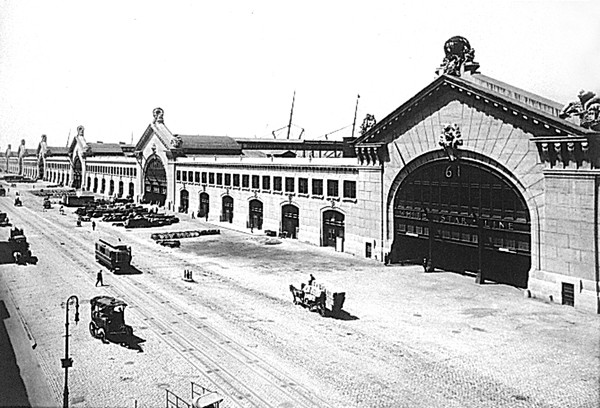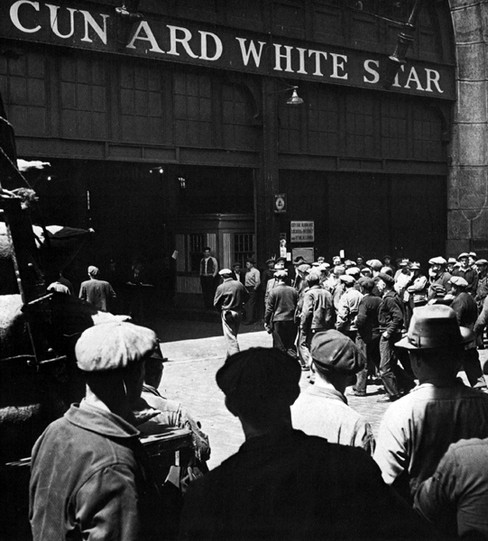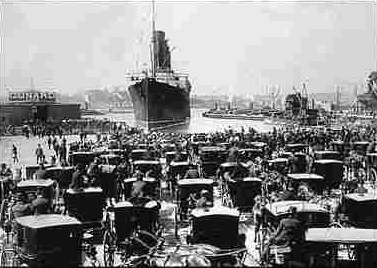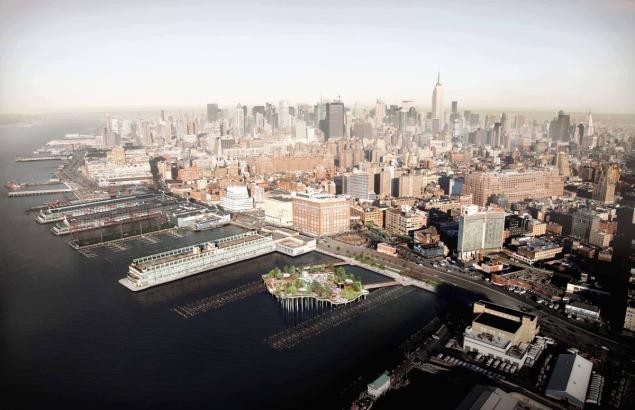Pier 54 and Titanic's Arrival
Introduction
Text-to-speech Audio
Images
The Chelsea Piers in the early 20th century (http://untappedcities.com/)

Longshoremen queueing outside of Pier 54 (http://www.newyorkcitywalk.com/)

Titanic's arrival (http://venues.chelseapiers.com/)

Plans to redevelop the pier (http://www.nydailynews.com/)

Backstory and Context
Text-to-speech Audio
The Piers opened in 1910, having taken more than thirty years of planning and a further eight to complete construction. Called "the most remarkable urban design achievement of their day" by the New York Times, the piers were the first stop for many European immigrants, who were transferred from the transatlantic ships to ferries that brought them to Ellis Island for registration. In addition, many luxury liners arrived and departed at the Chelsea Piers. The Titanic was due to conclude her maiden voyage at Pier 59 of the Chelsea Piers. Both pier and ship were owned by the White Star Line, who hoped that the luxury ship would be their most successful investment. However, the Carpathia ship that brought the Titanic’s survivors to the city was operated by White Star Line’s rival, the British-owned Cunard Line, who owned Pier 54. Cunard’s Mauretania and the Lusitania luxury liners also berthed at the Chelsea Piers. The latter was torpedoed by a German U-boat in 1915, killing almost two thousand people and eventually causing America to join the First World War in 1917. Further tragedy occurred on October 29th, 1929, when the Wall Street stock market crashed. The Barengaria luxury ocean liner, owned by Cunard Line, was the first ship to arrive at the Chelsea Piers after the event, and many of the most affluent passengers on board arrived to find that they were bankrupt.
Pier 54 featured a main shed, designed by New York City architects Warren and Wetmore, who also designed the Grand Central Terminal building. The piers were built in a Beaux Arts style, with pink granite and wood buildings, and enormous steel archways facing the street. During the early 20th century it was common to see long lines of longshoremen queue in front of this shed, where the day’s staff would be chosen by the boss of the pier.
However, in 1932 a fire destroyed the original Pier 54, and by 1933 the Depression had diminished the former allure of luxury transatlantic liners. During the 1930s newer and larger ocean liners arrived at the Chelsea Peirs, including the SS Normandie and RMS Queen Mary. These required longer piers, which were built along the waterfront between West 44th and West 52nd Streets. The Chelsea Piers became largely redundant and fell into non-use. By 1958 transatlantic liners had almost completely ceased operations, as commercial airplane services started connecting America with Europe. From that point on the piers were used to store and distribute cargo. When the largest cargo handlers, the Grace and United States lines, moved their operations to New Jersey in 1967 the Piers became entirely vacant.
In the 1990s the main shed and other features of the piers were demolished, but in 1992 plans to completely remove the old piers were replaced with a new project proposal by local developers Roland Betts, Tom Bernstein and David Tewksbury. Since then, the waterfront has been redeveloped by the Chelsea Piers Management, Inc. They have developed a sports and entertainment complex across a number of the historic piers, transforming the area into one of the city’s most popular destinations for relaxing and recreation.
